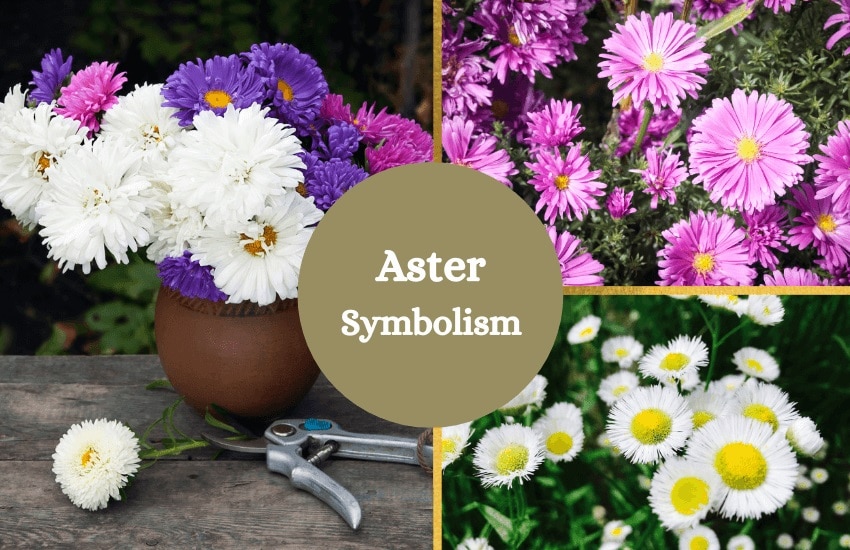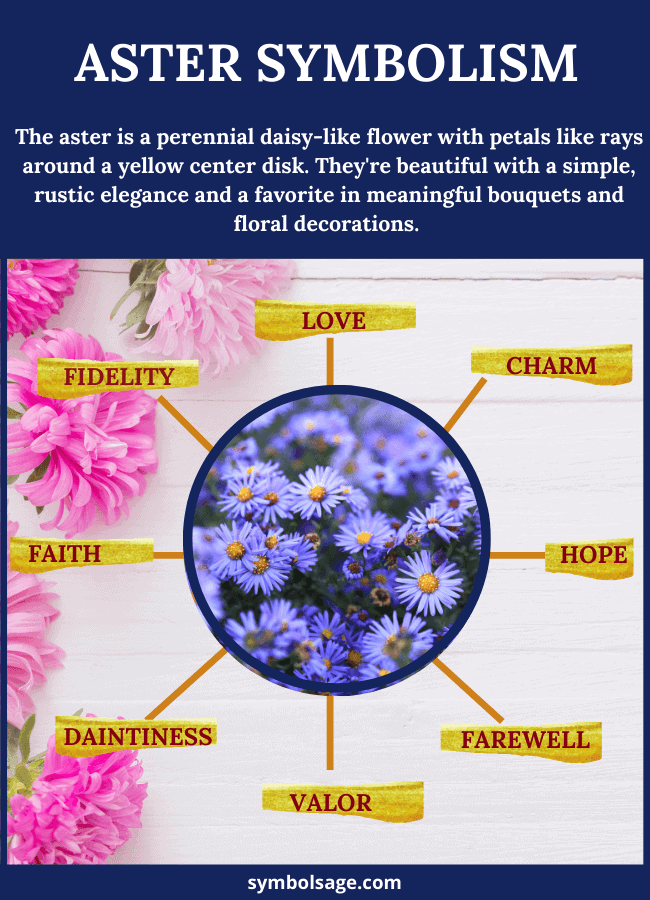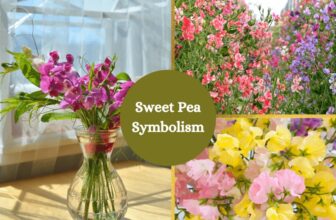
Table of Contents
A favorite in cottage and wildflower gardens, asters are starry-shaped blooms ranging in color from white to blue and purple. Here’s a closer look at the symbolism of aster flowers and how they’re used.
About Asters
Native to Eurasia and North America, Aster is a genus of beautiful flowers in the Asteraceae family. Its name comes from the Greek term for star, referring to the shape of its flowers. Asters are a composite flower, composed of many smaller flowers clustered together, even if they appear like one big flower. This is why its family has an alternate name – Compositae.
The aster has a daisy-like bloom with ray-like petals around a yellow center disk. Interestingly, some famous varieties are the New England aster and the New York aster, which aren’t really asters at all but belong to other genera. In England, asters are commonly referred to as Michaelmas daisies since they usually bloom around the same time as the holiday of St. Michael on September 29.
Asters are very popular and loved for their simple look. They have a sunny and happy appearance, much like a colorful sun, with rays of petals emanating from the central yellow. Although asters aren’t fancy, they’re pretty and popular.
Meaning and Symbolism of the Aster Flower
Asters are a perennial favorite of many gardeners because of their beauty, but they’re also loved for their symbolic meanings. Here are some of them:
- Love and Fidelity – Asters are believed to be a bringer of love. It’s thought that carrying or growing these flowers in the garden will attract love.
- Patience and Wisdom –Asters are regarded as the 20th wedding anniversary flower. Its symbolism represents the traits the couple has gained through two decades of partnership.
- Daintiness and Charm – The flower is sometimes called Aster elegans, which is a Latin term for elegant. During the Victorian times, asters were regarded as a symbol of charm due to their radiant look.
- Faith and Hope – In the famous poem A Late Walk by Robert Frost, the aster flower is regarded as a symbol of hope, as it’s seen as the last sign of life in an autumn field among withered weeds and dried leaves. These flowers are known for being drought resistant too.
- Farewell and Valor – In France, these flowers are commonly laid on the graves of soldiers for remembrance, as well as to express someone’s wish that things could have been different, which fits the other meaning of asters as an afterthought.
- Light – In some contexts, asters represent light, and are even called starwort due to its star-shaped blooms.

Aster in Greek Mythology
In Greek mythology, the flower is believed to come from the tears of Astraea, the goddess of innocence and purity. While there are many variations of the myth, one version says that during the early ages, people made iron weapons for destruction, so the god Zeus became furious and eventually decided to destroy all humankind with a flood.
However, the goddess Astraea became upset, so asked to be turned into a star. From the heavens, she saw what happened to earth and wept. Her tears had fell to the ground and turned into star-shaped flowers. For this reason, asters were named after her.
Uses of Aster Flowers throughout History
Asters are not only aesthetically pleasing but are also a versatile flower, with many uses. Here are some:
In Medicine
Disclaimer
The ancient Greeks made an ointment from asters as a treatment for dog bites. In Chinese herbal medicine, the aster Callistephus chinesis is used to treat pulmonary ailments, epilepsy, hemorrhages and malaria. It’s also thought to increase blood circulation, as well as for being a great remedy for flu.
In Arts
The flower has been an inspiration for many artists, including Claude Monet, the famous French Impressionist painter, who featured the bloom in his Vase of Asters painting in 1880.
In Politics
During the liberal-democratic revolution in Budapest, Hungary in 1918, aster flowers were sported by protesters. As a result, this movement became known as the Aster Revolution.
Aster Superstitions
Aster flowers were regarded as sacred by the early Greeks, who dedicated them to Hecate, the goddess of magic and witchcraft. In ancient Rome, they’re the emblem of Venus, the goddess of love and beauty. Many believed that decorating altars with aster flowers will deepen their spiritual connection with the divine feminine.
In medieval Europe, it was thought that the flower possesses magical powers to drive away serpents, as well as ward off evil spirits and negative influences. In some beliefs, the ability to grow asters is linked to one’s knowledge of the darker side of magic. Some even hung dried bouquets of asters in their attics in hopes of protection.
On the other hand, China asters are believed to bless one’s home, where its dried leaves and flowers have been used to make tea.
The Aster Flower in Use Today
Nowadays, asters are regarded as the star of summer and fall gardens, adding a burst of color to the landscape. Asters are versatile and can be placed on borders and containers, as well as along paths and walkways. They’re long-lived perennials and can be planted almost any time of the year.
While these blooms have a wildflower appeal, they’re often used as a filler flower in wedding arrangements. Their star-shaped flowers are ideal for adding texture to centerpieces and bouquets. However, they’re a bee magnet and might not be the best choice for outdoor weddings.
Asters are perfect for creating beautiful flower arrangements for all occasions, especially when placed in vases or baskets.
When to Give Aster Flowers
Asters are regarded as the September birth flower and the 20th anniversary bloom. They make a thoughtful gift for these birthdays and anniversaries, and any autumnal celebrations. With their rich symbolism, these blooms can also be gifted for those celebrating their milestones or starting a new career. They’re also perfect for graduations, holidays and any celebratory event.
In Brief
Asters ahve been significant throughout history for their simple beauty and positive symbolism. With their star-shaped blooms and lush texture, asters are loved for their color and look, taking center stage in many gardens.








